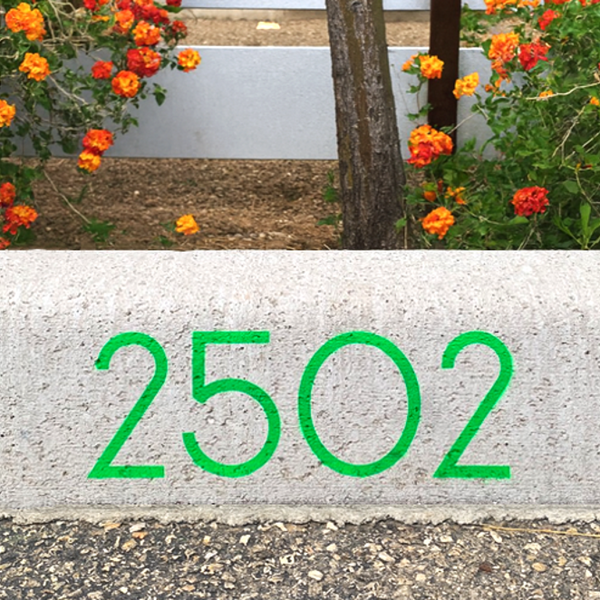Guest Contributor: Matt Swanson, Assistant Property Manager at RentAmes
Across the country, historic properties tell the story of craftsmanship, community, and architectural integrity. Preserving these buildings and keeping them relevant to modern life requires a delicate balance between honoring the past and embracing thoughtful updates. For property managers, designers, and homeowners alike, this balance can be achieved through intentional design decisions, both large and small, that celebrate the original character of a structure while improving its functionality, comfort, and appeal.
In this guest feature, Matt Swanson, Assistant Property Manager at RentAmes Property Management, shares his expert insights on how simple design choices, from paint color to lighting, landscaping, and even modern house numbers, can make a powerful impact in restoring historic charm while elevating modern curb appeal. RentAmes Property Management is a locally owned, full-service company based in Ames, Iowa, specializing in residential, commercial, and storage properties. With a focus on quality maintenance, responsive communication, and long-term value, RentAmes treats every property as if it were their own, making ownership and leasing simple, efficient, and worry-free.
Inspiration Starts with the Past
 When approaching a renovation or restoration, one of the most effective ways to begin is by looking back at the building’s original design. Historic photographs, architectural plans, and early color palettes can all serve as valuable inspiration for modern updates.
When approaching a renovation or restoration, one of the most effective ways to begin is by looking back at the building’s original design. Historic photographs, architectural plans, and early color palettes can all serve as valuable inspiration for modern updates.
“Understanding the building’s history helps guide the design,” says Swanson. “We often look at old photos to see what made the property unique and use that as a starting point to determine which elements to restore or reinterpret.”
This approach ensures that even new materials and finishes feel authentic, helping blend modern upgrades seamlessly into their historic surroundings. By honoring the property’s origins, the finished design tells a cohesive story, one that respects both time and place.
Beyond Color: The Design Elements That Matter Most
When most people think of curb appeal, color is often the first element that comes to mind. While it’s certainly a critical factor, Swanson emphasizes that other design principles like size, proportion, contrast, and texture, play equally important roles in creating a visually balanced exterior.
“Selecting appropriate color palettes and ensuring cohesion among all finishes allows the design to flow naturally,” Swanson explains. “A color palette should lead the design. Ask yourself, do you want a warm farmhouse style, a clean modern look, or something more contemporary?”
Choosing a thoughtful palette sets the tone for all other design decisions, from trim colors to lighting and hardware finishes.
Swanson also recommends paying attention to contrast, particularly between the trim and the main exterior. Elements such as fascia, window frames, shingles, fencing, and address numbers can either blend in or stand out, depending on the desired look. A well-balanced contrast draws the eye to architectural details that might otherwise be overlooked, enhancing both dimension and personality.
Lighting That Works Hard (and Looks Beautiful)
Lighting is another area where small adjustments can create significant improvements. Swanson encourages property owners to think strategically about what needs to be illuminated and why.
“When considering lighting, we first identify whether the goal is safety, functionality, or visual impact,” he says. “Accent lighting around address numbers can give the property a more complete look, but it also helps delivery drivers and visitors find the home easily.”
Well-placed lighting enhances both aesthetics and practicality. Pathway lights, sconces, and uplighting can highlight architectural details, increase visibility, and promote safety, all while reinforcing the home’s overall style.
One of the most underappreciated lighting opportunities, Swanson notes, is address lighting. Illuminating modern house numbers not only elevates curb appeal but also increases functionality after dark.
The Power of Small Finishes
 When refreshing a property, not every improvement requires a large investment or a professional crew. Swanson notes that minor hardware upgrades can completely transform the perception of a space.
When refreshing a property, not every improvement requires a large investment or a professional crew. Swanson notes that minor hardware upgrades can completely transform the perception of a space.
“Small finishes like doorknobs, locks, or knockers can be changed quickly to give an old door a new appearance,” he explains. “Just remember to stay within your chosen color palette to maintain cohesion across the property.”
If the door itself needs replacing, consider whether the original style, such as a wood 5-panel design or a decorative glass insert, can be replicated or restored. These subtle decisions help maintain the integrity of the architecture while adding a sense of craftsmanship and care.
DIY-Friendly Improvements That Make a Big Impact
You don’t have to be a contractor to make meaningful design improvements. Swanson shares that many low-labor, high-impact updates can significantly elevate the look and feel of a property without requiring major renovations.
These include:
-
Painting a gable or peak to highlight architectural lines
-
Staining brick or washing mortar to freshen up aged materials
-
Painting trim or updating a front door color for contrast
-
Installing new modern house numbers for a clean, finished look
Each of these small updates can be done over a weekend but can dramatically change first impressions. “Simple upgrades like changing out old or faded address numbers can instantly modernize a property,” Swanson says. “They’re often one of the first things people notice.”
This is where Modern House Numbers comes in. High-quality, customizable numbers and letters can unify a design aesthetic, whether your project leans historic, modern, or transitional. Their handcrafted finishes and precision-cut materials make them ideal for both preservation projects and new developments looking to add visual interest.
Adding new address numbers or a sleek wayfinding plaque isn’t just cosmetic; it’s also practical. Clear, well-placed signage improves navigation, adds a professional polish, and enhances the property’s perceived value.
When It’s Time for Larger Upgrades
While small projects can have a major visual impact, larger repairs or replacements, like windows and doors, present an opportunity to elevate both energy efficiency and aesthetic appeal.
“Windows are one of the most overlooked items,” Swanson says. “White vinyl windows are the most common and often the most affordable option, but they tend to have a more commercial look. Upgrading to black vinyl can make a remarkable difference, often for only a minimal price increase.”
These types of decisions are essential for property managers balancing budget and long-term return on investment. The right material and finish can enhance a building’s style while offering durability and low maintenance, helping preserve the property’s value for years to come.
Landscaping: Function Meets Form
Even the most beautifully restored building can lose its impact if surrounded by overgrown or neglected landscaping. According to Swanson, landscape maintenance is as vital to curb appeal as any architectural feature.
“Functionality matters just as much as appearance,” he explains. “Trees should be trimmed eight to ten feet above any walkways, and vegetation should never touch the house or roof.”
Overgrown branches can cause paint deterioration and roof damage, problems that can become costly if ignored. Regular trimming not only protects the structure but also enhances safety and visibility around the property.
Additionally, routine tasks like removing debris, trimming shrubs, and clearing fences can make a property look well-maintained and cared for. Simple, consistent upkeep communicates professionalism and pride of ownership, qualities that attract tenants, buyers, and clients alike.
Balancing History and Modern Appeal

Whether you’re revitalizing a mid-century gem or maintaining a historic property in a growing urban market, the goal is the same: to strike a balance between preserving authenticity and embracing modern improvements.
Swanson and his team at RentAmes have seen firsthand how thoughtful updates can breathe new life into aging structures. By combining historic design sensibilities with modern materials and finishes, property owners can achieve spaces that feel timeless, not dated.
Modern details, such as matte black address numbers, brushed metal light fixtures, and cohesive color palettes, can coexist beautifully with traditional architecture. The result is a property that pays homage to its past while presenting a fresh, modern identity that appeals to contemporary tenants and buyers.
Practical Steps for Thoughtful Property Updates
 For property managers and trade professionals ready to enhance their portfolio, Swanson recommends this simple framework:
For property managers and trade professionals ready to enhance their portfolio, Swanson recommends this simple framework:
-
Research and Plan – Begin with historic references and neighborhood context. Identify which design elements are essential to preserve.
-
Select a Cohesive Palette – Choose a color scheme that reflects your desired style, whether that’s modern, classic, or eclectic, and ensure all materials align.
-
Upgrade Small Details First – Focus on finishes, hardware, and house numbers before committing to large-scale changes.
-
Use Contrast Strategically – Highlight architectural strengths through contrasting trim, doors, and accent features.
-
Invest in Lighting – Combine safety and aesthetics with functional exterior lighting that accentuates the building’s best features.
-
Maintain Landscaping – Keep outdoor spaces tidy, trimmed, and intentional to reinforce the property’s overall presentation.
This approach maximizes both budget and impact while keeping the property aligned with its architectural roots.
A Modern Take on Timeless Design
 Ultimately, revitalizing a property is about storytelling. It’s about respecting the craftsmanship of the past while reimagining what that space can be in the future. As Swanson puts it, “Design choices don’t have to be massive to make a big difference. Even the smallest updates, when done thoughtfully, can completely transform a property’s look and feel.”
Ultimately, revitalizing a property is about storytelling. It’s about respecting the craftsmanship of the past while reimagining what that space can be in the future. As Swanson puts it, “Design choices don’t have to be massive to make a big difference. Even the smallest updates, when done thoughtfully, can completely transform a property’s look and feel.”
For anyone in property management or design, this philosophy is both practical and inspiring. It reminds us that every building, no matter its age or condition, has potential waiting to be uncovered.
Explore More
If you’re inspired to elevate your next property renovation, explore the thoughtful design and management work of RentAmes. Their approach blends respect for history with modern sensibility, ensuring every property they manage tells a story worth preserving.
And for design professionals or property managers looking to add finishing touches that make a statement, visit Modern House Numbers. From modern address numbers and letters to custom signage and plaques, each product is designed and handcrafted to make your property stand out, beautifully blending history, function, and modern design.



